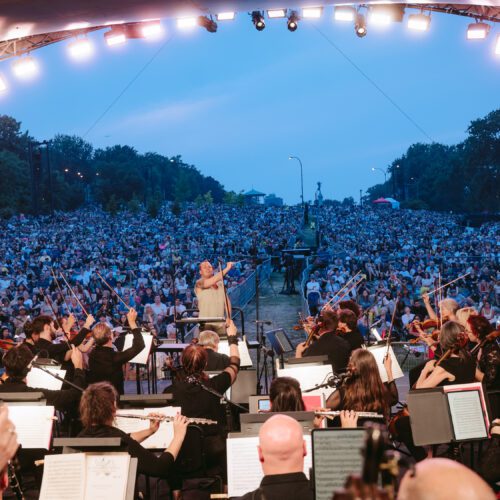Sandeep Bhagwati is an authentic and vibrant incarnation of transculturalism in music, and we’re contemplating the extent of this during the SMCQ’s 2023-24 season, here’s the most recent illustration : last Monday and Tuesday at UQAM’s sold-out Coeur des Sciences, the composer highlighted in the SMCQ’s Série Hommage presented a work that was ” deeply emotional, spiritual and immersive “.
For 4 voices and 4 trombones, Prana explores breathing, drawing on spiritual concepts from southern Asia. On the program, inspiration, expiration, meditation, textural quest, frequenting the body’s 7 yogic chakras, performance, comprovisation – a combination of the words composition and improvisation, illustrating and assuming the dynamic coexistence of these two practices in musical creation.
Isolated in different localities during the pandemic, the trombonists had united (in visio, we imagine) their respective breaths, thanks to the breathing exercises induced by this comprovisation project. Inspired by this experience, Bhagwati composed Music of Breaths, this time written for four a cappella voices. From this idea of merging the two experiences was born Prana.
” In Sanskrit,” Bhagwati explains at the outset, “Pra means to fill and Na means life or breath. ” Thus, Prana explores the sounds generated by the human breath and offers ” new perspectives in the way you breathe and listen “.
A Montrealer by adoption, born of Indian and German cultures, the composer and theorist of transcultural comprovisation expresses himself here in French, English and German. He clearly introduces his composite work, based on a synthesis of both philosophical and spiritual concepts, concepts inducing the sounds to be expressed by the 4 singers and 4 trombonists : Kathy Kennedy, Sarah Albu, Elizabeth Lima, Andrea Young, Felix Del Tredici, Kalun Leung, David Taylor, David Whitwell.
First it’s the expression of brass instruments exchanging long-exhaled notes, then it’s the voices’ turn to express themselves in linear frequencies. Then the 8 artists work together, then in sections, and so on to a more compositionally elaborate conclusion.
The extensive techniques of trombone playing (grumbling, low harmonics, human breath exacerbated through the sound of the instrument, etc.) and voices (subtle games of onomatopoeia, vast lexicon of textural research, etc.) lead us to this zone of comprovisation arranged by Sandeep Bhagwati.
The structure of the expression games is simple, requiring the creativity of each performer in real time, reminiscent of several free improvisation experiments observed over the last few decades, lightly harnessed by a loosely-constrained compositional system. Nevertheless, the superimposition of voices and trombones requires real compositional coherence, with pre-recorded elements (direct or indirect respiratory evocations, etc.). The trombones opt for continuous sounds, while the voices express themselves in jerks, producing an interesting counterpoint.
Fragments of melody are subsequently interwoven into an organized whole, and on the trombone side, a vocal bestiary is set in motion, leaving us somewhere between a concert and a hike in the Ecuadorian forest;
At the end, the organization of sounds imagined by Sandeep Bhagwati becomes denser and more complex, requiring orchestral direction (Cristian Gort) and extra effort from the performers to flesh out the discourse and execute its conclusion.
photo credit: Marie-Ève LaBadie
























